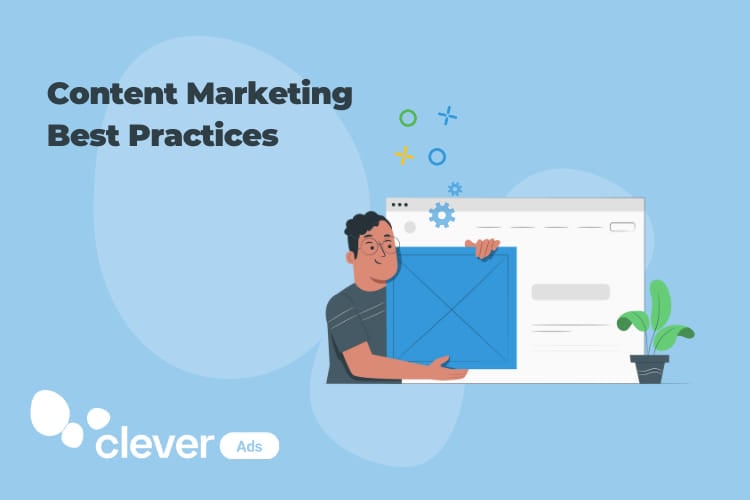2023 Content Marketing Best Practices (+Examples)
Content marketing is one of the most cost-effective methods to boost your brand visibility, attract new business opportunities, and establish yourself as a thought leader in your industry.
However, if you want this strategy to work, you need to keep up with the latest trends and avoid the one-size-fits-all approach.
There are some fundamental, core content marketing principles that have been working for quite some time, but if you want to stand out among your competitors, it’s essential to add some new tactics to the mix.
Here are some best practices you can implement in 2023 to improve your content and unlock its potential.
1. Stop worrying about word count, but…
While the analysis of the first Google search results has shown that they’re 2,146 long on average, you should know that word count isn’t a ranking factor.
Confusing, right?
Luckily, it’s not. The trick is to craft in-depth content that offers solutions to your audience’s pain points, gives them the answers they’re looking for and, generally speaking, adds value. In other words, you shouldn’t try hard to reach a 2,000-word benchmark just for the sake of it and fill your content with fluff.
Make sure your every sentence counts and packs a punch.
This way, both readers and search engines will love your content.
For example, Eachnight’s guide on best mattresses in 2023 is an exhaustive resource that gives all the relevant information a buyer needs before making a purchasing decision. The brand covers 16 different categories and provides Overview, Pros and Cons, How Lying down feels, and Inside the mattress sections for each. Plus, this comprehensive piece discusses what to look for in a mattress and suggests some models for specific needs and sleeping positions.
No wonder such a wealth of useful information requires more than your average 2,146 words. However, it’s value-packed and educational, which justifies its length.

2. Leverage interactive content
Customers are fed up with bland, impersonal content. 71% of consumers expect personalized interactions with brands, and 76% are frustrated if this doesn’t happen.
And nothing says “personalized content” better than interactive tools, calculators, image sliders, infographics, and similar pieces that turn your audience from passive readers or viewers into active participants. Sure, hilarious BuzzFeed quizzes are the first thing that comes to mind when we think about interactive content. But it’s worth noting that this format lends itself well to some more serious business purposes.
Function of Beauty, for example, uses a skincare quiz to help their customers pick the products suitable for them based on a number of parameters. Given that people can select different answers, the content they get will be tailored to their needs and preferences. All this makes interactive content highly personalized and excellent for generating new leads.
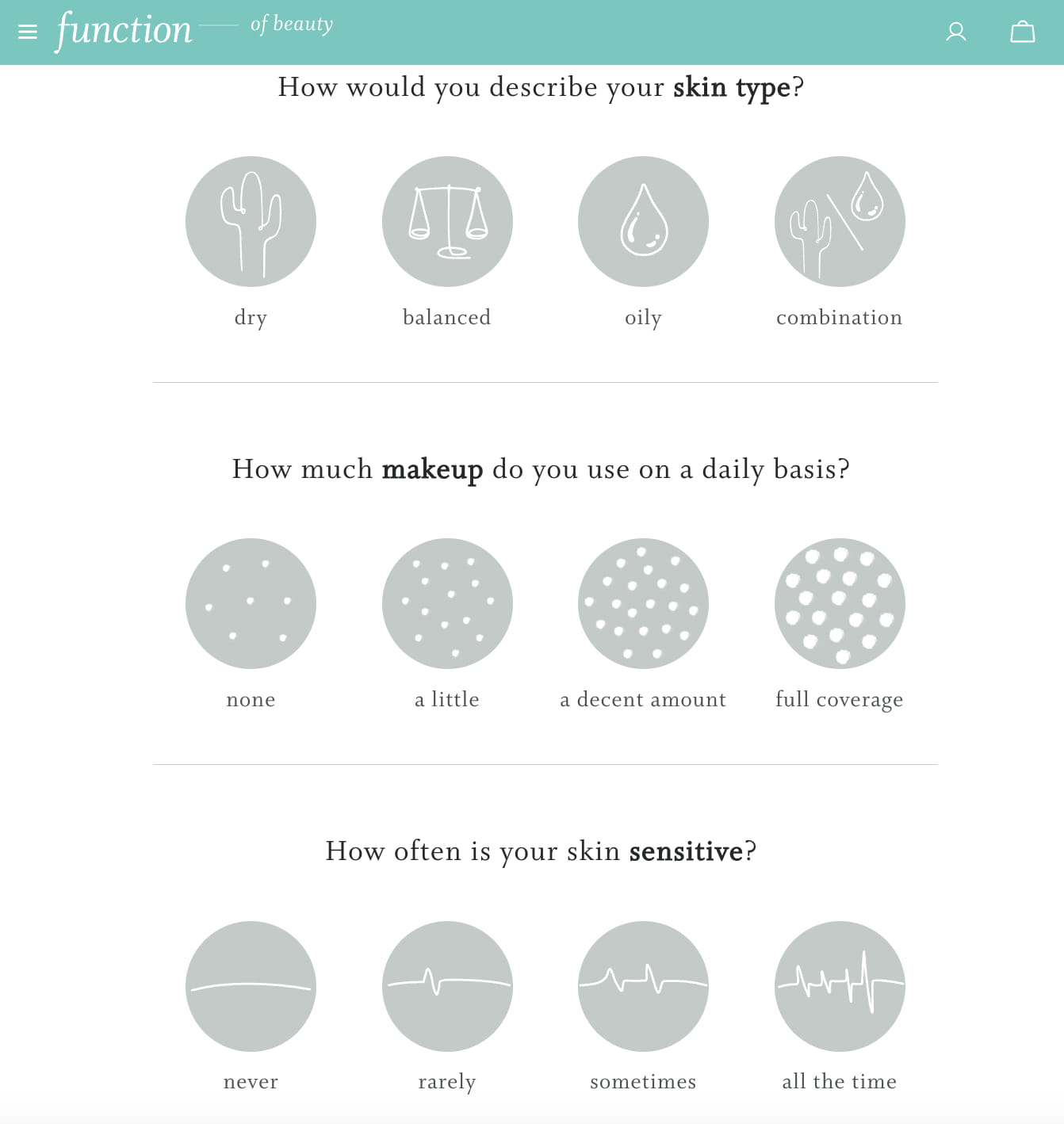
Similarly, Words with Friends and Scrabble aficionados will appreciate this handy tool for solving anagrams from Unscramblex. This user-friendly tool also has advanced features for players to refine their parameters, which is why it’s a reliable resource for all those who play these board games in their spare time.
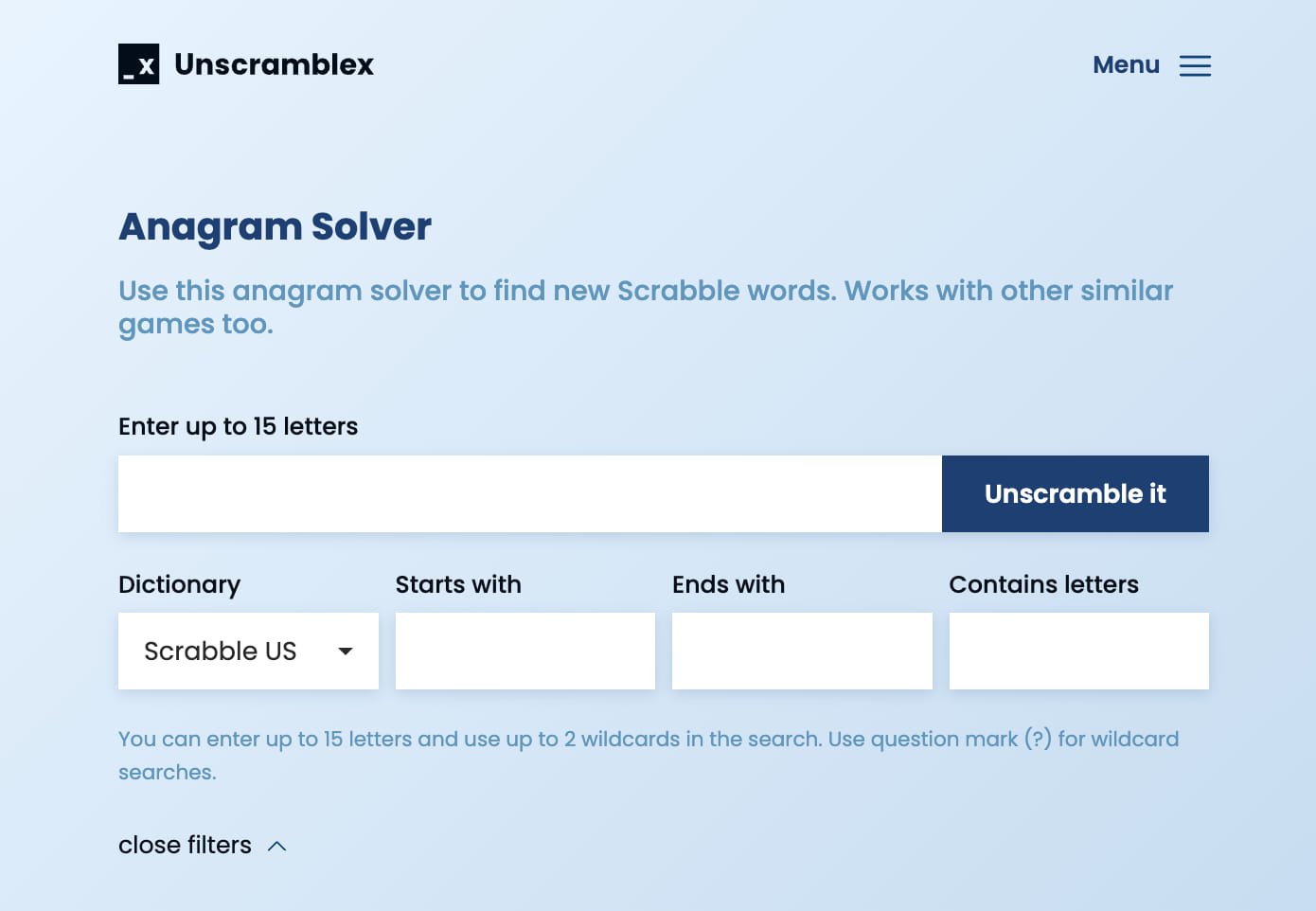
Besides being useful for engaging your audience and generating high-quality leads, interactive content comes with another perk — you’ll get first-hand customer data you can later use for your marketing campaigns and informing your business decisions.
3. Content design matters
And when we say content design, we mean the way your blog posts and other text-based pieces are structured, designed, and presented to your readers.
User experience is one of the most important aspects of website design, so ensuring your content is reader-friendly and easy to follow should be your top priority. Otherwise, all the efforts you invested in creating high-quality, valuable content will go down the drain because nobody will want to read it.
To prevent this worst-case scenario and make your content easy on the eyes, use the following principles:
- Use subheadings to organize your content around specific ideas.
- Break down walls of text by creating shorter paragraphs and adding visuals.
- Use optimal text density by selecting the right line spacing, font size, and letter spacing.
- Don’t be afraid to use negative space generously. It will allow you to make your key points more prominent and draw readers’ attention to them.
- Organize your information properly, especially if your content is data-driven.
Check out Backlinko’s Video Marketing Guide. It’s a textbook example of a well-structured blog post that implements all the UX best practices, including bite-sized chunks of text separated by charts and illustrations, lots of white space, and intuitive subheadings. All this makes their content easily scannable, which means that readers won’t bounce off because they can’t find what they’re looking for instantly.
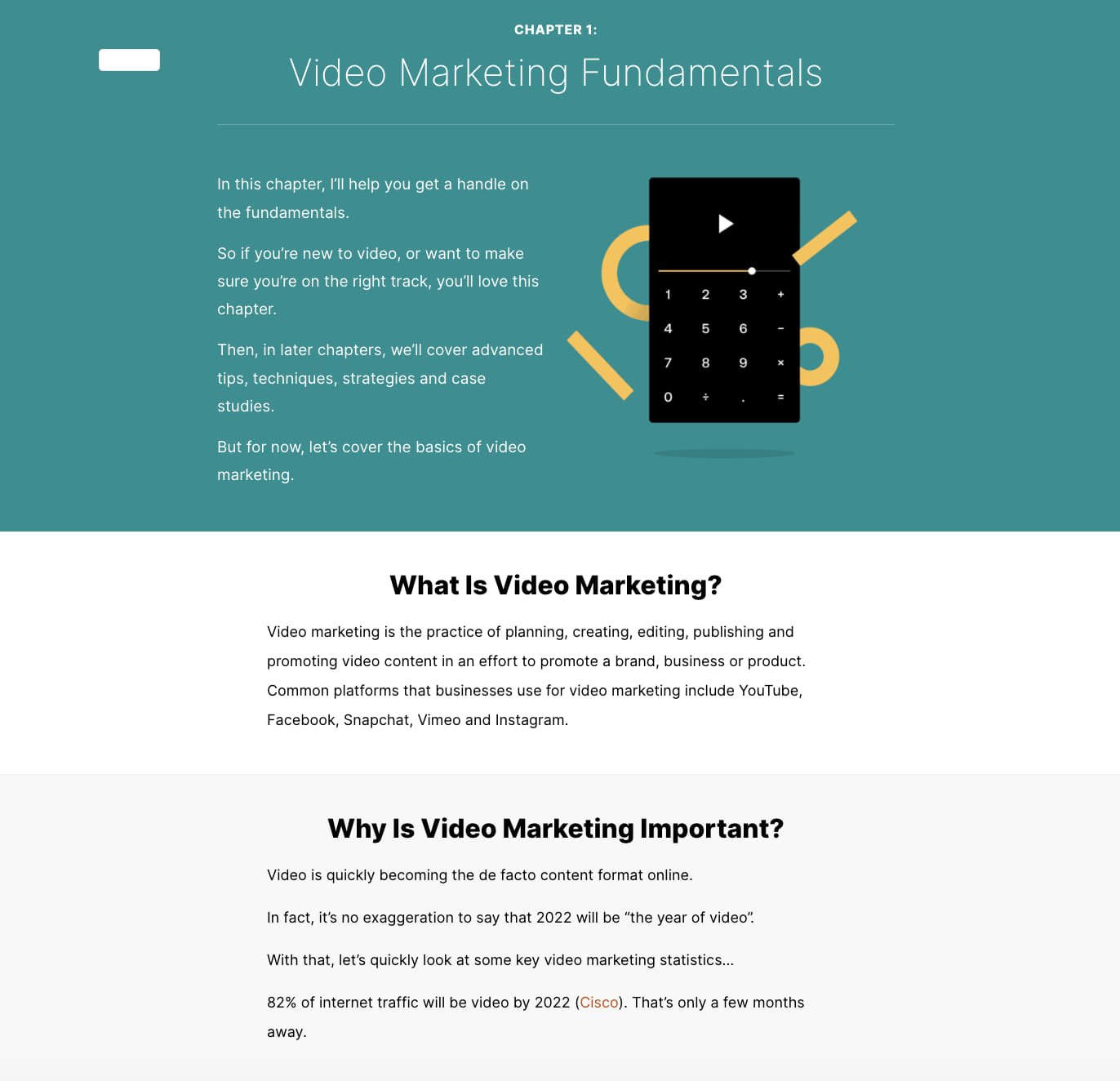
MarketBeat does a great job of presenting data-driven content in an aesthetically pleasing and easy-to-read manner with their Penny Stocks List page. They managed to find the right design for such data-heavy content by including small visual elements at the beginning of each row to make it easier for readers to tell different entries apart. A dynamic filtering option is a clever idea to avoid squeezing several tables into a single page and requiring readers to scroll endlessly to find the one they need.
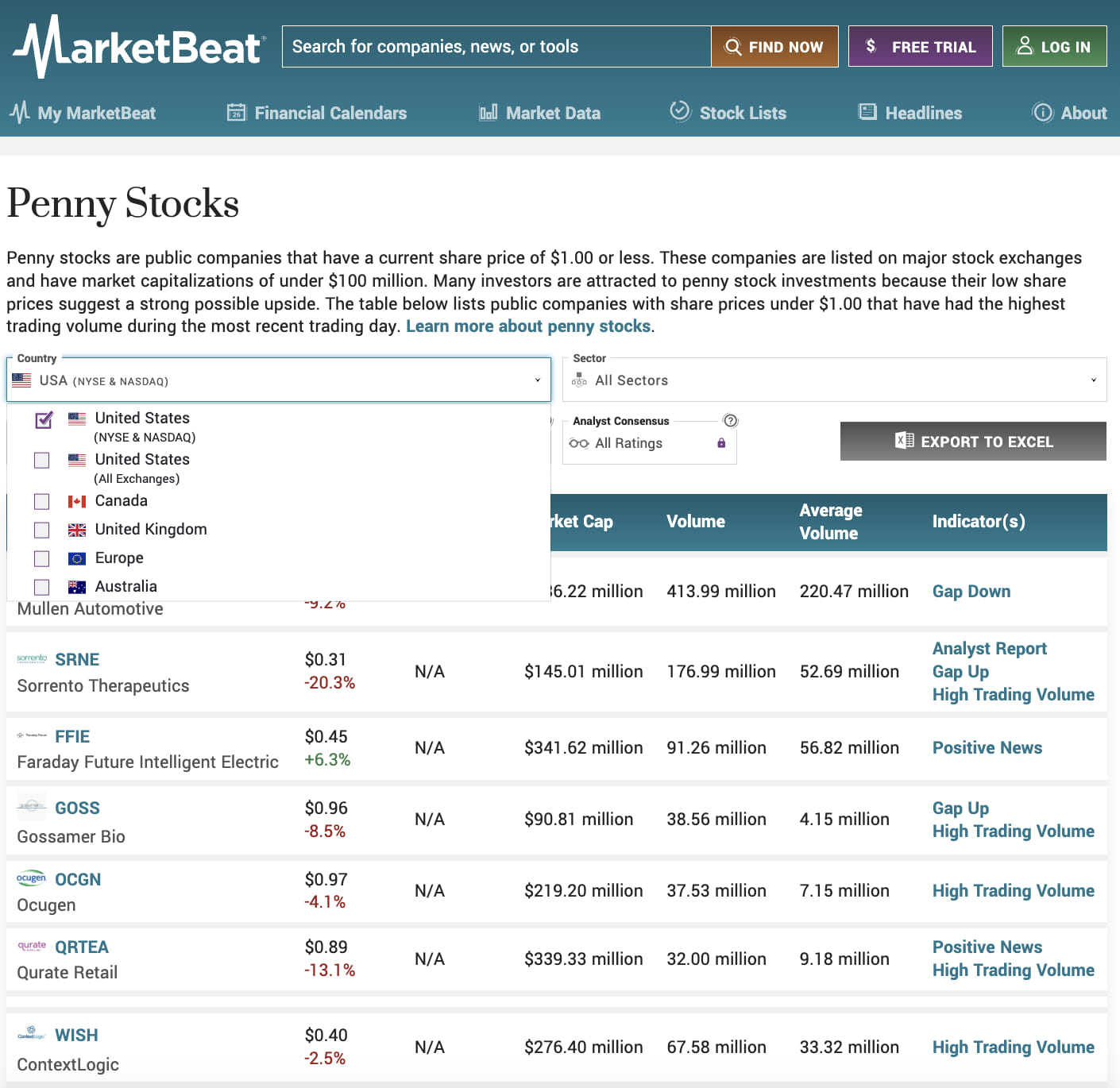
4. Repurpose and update your content
The best way to make the most of your content is to repurpose it by turning it into different formats. This will allow you to expand your reach since you can share these upcycled pieces to various social media platforms and diversify your content strategy.
Creating new content from scratch is a time-consuming process, so repurposing will also help you cut your costs and publish a steady stream of high-quality pieces. Let’s say you have a blog post that performs exceptionally well, so why not piggyback on its success and value by repurposing it as a video and accommodating members of your audience who prefer video over written content?
Another practical tactic for extending the shelf life of your content is updating it. Data, trends, and advice can go stale within a couple of months, so if you want your pieces to stay relevant and up to date, revisit them regularly.
Adding new and removing obsolete information gives you an opportunity to republish your content as a fresh blog post, guide, or another resource.
It’s a good idea to include a year in the title and update that detail, too, since it will help your content pop up in the search results. Besides updating the meta title and the content itself, whip up a new meta description, as this will indicate to the search engines that your content is relevant.
However, keep the same URL. That way, you won’t have to create redirects and go through the process of earning backlinks for the same content again.
Tower Electric Bikes enriched their lengthy blog post about the most and least bike-friendly cities in the US with an eye-catching infographic that recaps the main points. Apart from being colorful and presenting the information in an easily digestible manner, infographics and social media are a match made in heaven. So, for improved engagement and shareability of your content, try this approach.

In Closing
To revamp your content marketing strategy and ensure all your efforts are worthwhile, follow these best practices. As you can see, it’s not rocket science. Moreover, these tactics can help you save a lot of time and resources while delivering superb content to your target audience.

Natasha is a lady of a keyboard and one hell of a geek. She has been working for, and collaborating with, individual clients and companies of all sizes for more than a decade. Natasha specializes in writing about design, branding, digital marketing, and business growth. She is also addicted to art in all its forms and grilled tofu.
